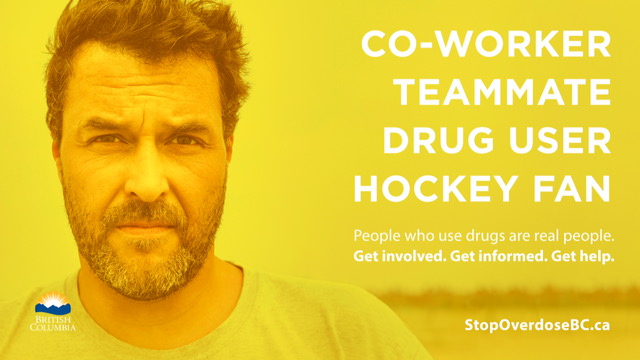Understanding why people use substances alone: Listening to those with lived experience
Context and questions
In 2017, more than 1,450 people in B.C. died of a suspected substance overdose. The BC Coroner noted that four out of five people were male and nine out of ten deaths occurred indoors. More than half of those deaths were in private residences. When a suspected overdose happens in a private residence, the individual is often alone and their ability to seek medical help diminishes greatly.
The Ministry of Mental Health and Addictions wanted to gain a greater understanding about why people use substances alone. The project was guided by the following objectives:
- Learning. Gaining a deeper understanding of the experiences of people who use substances and those who provide support.
- Insights. Understanding people’s motivations, challenges and ideas for change and how these factors connect within the system.
- Collaboration. Strengthening and fostering relationships among citizens, community groups, service providers, researchers and policy makers to create places for change to take hold.
Our approach
Working together, the Ministry of Mental Health and Addictions and the Service Design Team set out to better understand the complex problem of substance use when alone.
The project included three approaches:
- The team worked with a paid peer research named “Voices.” Voices has lived experiences using substances alone. His work included co-designing research questions, connecting the team to other people with lived experience, facilitating interviews, and holding the team accountable throughout the process.
- Listening to voices of those with lived experience. The team spoke with more than 100 people; those who use substances alone, their family and friends, and support providers. Each conversation lasted for about an hour and was held in a safe location, a social or private setting of the storyteller’s choice.
Co-design sessions were held with people who use substances to verify findings and explore ideas for better services on topics such as “Designing a Better Healthcare Experience,” “Safe Spaces to Use Drugs,” “Designing a Public Message and Campaign,” and “Designing Technology to Help People Be Safer.”
- Ongoing collaboration with a field of experts. Connections were established province-wide with the “Reaching and Engaging People who Use Drugs Alone Task Group,” the six health authorities, community organizations, and other researchers to consult on and verify research findings.
Outcomes that matter
A deeper understanding from people with lived experiences. The team worked and learned openly and collaboratively with everyone, from our storytellers to stakeholders. Through this, the team forged stronger relationships between ministries, health authorities, community organizations, and ultimately citizens.
Supporting an evidence-based approach to designing new policies and services. With a deeper understanding of people who use substances alone, the team helped to reframe the problem.
What if the opioid crisis was not solely about substance usage, but instead about a social inequality issue rooted in how we cope with mental and physical pain? What if the opioid crisis can lead to discussions about drug decriminalization? The team’s research led to 44 opportunities for change, which represent five themes distributed over three areas of influence (society, public services, and policy).
Increased human-centred design capabilities. By taking a human-centred design approach, the team increased human-centred design capabilities within the Ministry of Mental Health and Addiction and provincial health authorities.
Artefacts
Journey Map: The Journey Map brings together the findings about why people may use substances alone in private residences. The Journey Map helps the reader understand people’s experiences, the contributing external factors, and their current strategies for staying safe when using substances. This artefact can help shape new public services, so that they are more effective in lowering overdoses. Read the Journey Map.
Systems Map: The Systems Map summarizes findings about the root causes of this complex problem. These root causes can be leverage points for change and help service providers work effectively in the field. The Systems Map is a tool for exploration: how an action can shift or change the system, what are the potential consequences of an action, and how can collaboration be used as a way to strengthen impact? Read the Systems Map.
Stories Booklet: The Stories Booklet contains 25 anonymized stories from people with lived experience and support providers. The stories explore reasons for using substances alone and ideas for change. The booklet includes a topic legend so the reader can find stories relating to their work or interest. Read the Stories Booklet.
Anti-Stigma Public Awareness Campaign: The Ministry of Mental Health and Addiction launched an anti-stigma media campaign January 2018. The campaign was informed by the team’s research and focused on the theme People who use drugs are real people.
Opportunities Booklet: The opportunities booklet includes over 44 opportunities that are examples of what people think would help them live healthier lives, be treated with more respect and dignity, and make change in this complex problem. This book is intended to be used as a tool for learning, understanding, exploration and inspiration. Read the Opportunities Booklet.

